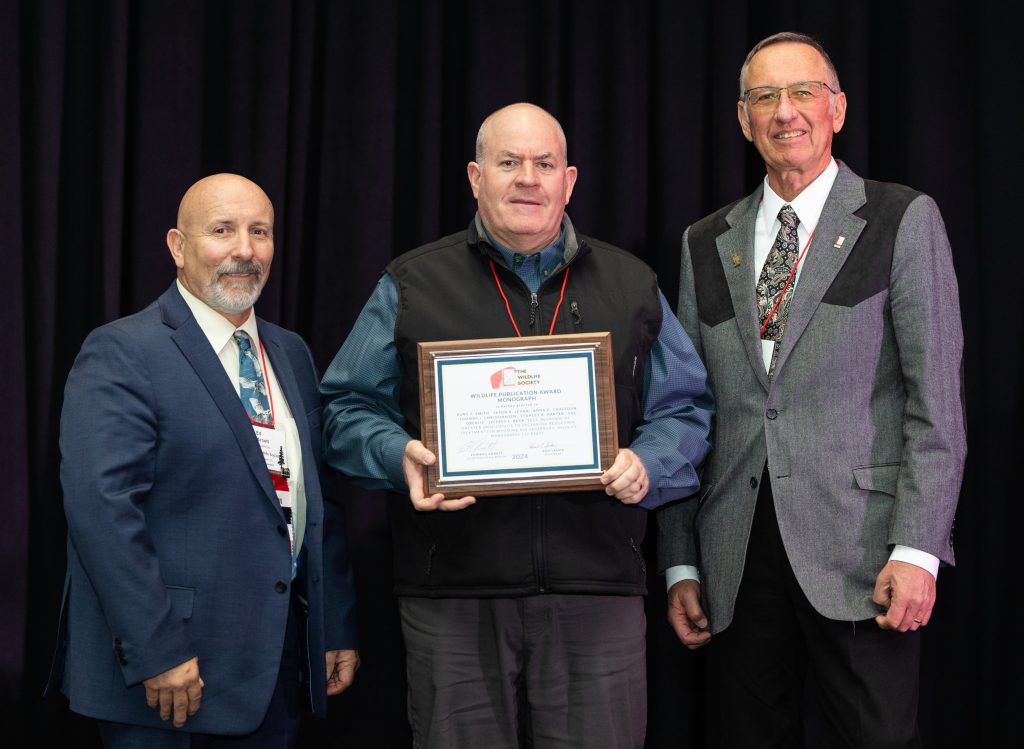A group of University of Wyoming researchers has been recognized by The Wildlife Society for a multi-faceted study on the effects of sagebrush reduction on the greater sage-grouse.
The Wildlife Society is an international association for professionals involved in wildlife management, conservation, and research. The society’s annual awards program recognizes scientists, wildlife managers, educators, and others who have made outstanding contributions to wildlife science and management.

UW researchers, collaborators, and former students received the 2024 Best Monograph award for their paper “Response of greater sage-grouse to sagebrush reduction treatments in Wyoming big sagebrush,” published in the journal Wildlife Monographs.
“It’s a great honor to be recognized with this award, which highlights studies that have long-term, robust datasets that ask both broad and specific questions,” says Jeff Beck, UW professor of ecosystem science and management.
Beck’s co-authors include UW alum Kurt Smith, now a senior research scientist with the UW Department of Zoology and Physiology; UW alum Jason LeVan, now a rangeland management specialist with the USDA-Natural Resources Conservation Service in Pinedale; Anna Chalfoun, UW associate professor and assistant unit leader of the USGS Wyoming Cooperative Fish and Wildlife Research Unit; Thomas Christiansen, retired Wyoming Game and Fish Department sage-grouse program coordinator; Stanley Harter, wildlife biologist with the Wyoming Game and Fish Department; and Sue Oberlie, retired Bureau of Land Management wildlife biologist.
The award-winning paper details the results of a nine-year study in central Wyoming that found sagebrush reduction strategies, such as mowing and herbicide applications, did not benefit local sage-grouse populations. While sagebrush reduction is a common management practice in Wyoming, researchers found that effects on the birds were neutral at best. “Our results may challenge a historic paradigm for sagebrush management,” says Chalfoun.
For six years after sagebrush reduction treatments were applied, the scientists tracked behaviors and survival rates of more than 600 female greater sage-grouse. They also monitored effects on invertebrate populations and herbaceous forbs, both of which sage-grouse rely on for food.
Results indicated that neither mowing nor application of the herbicide tebuthiuron influenced nest success, brood success, or female survival. Instead, the researchers observed a slight avoidance of habitat that had undergone sagebrush reduction treatments. The treatments also did not appear to positively affect sage-grouse food sources.
“We were able to answer questions about whether or not specific habitat treatments consistent with the Wyoming Sage-Grouse Core Area Policy were beneficial, benign, or harmful to sage-grouse, thereby ensuring future conservation efforts and dollars are more effectively spent,” says Christiansen.
To view the paper, visit https://bit.ly/sagebrush-reduction-effects. Contact Beck at jlbeck@uwyo.edu or (307) 766-6683 with questions.




